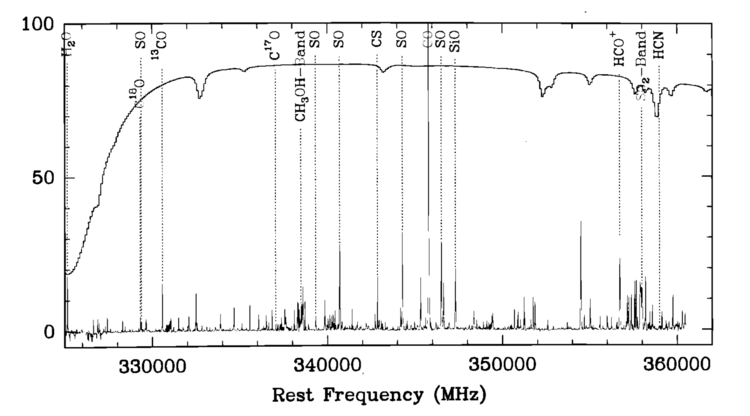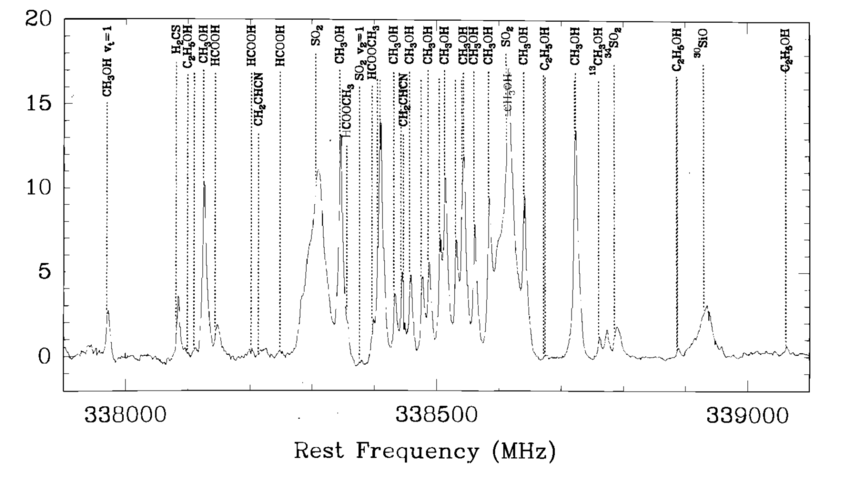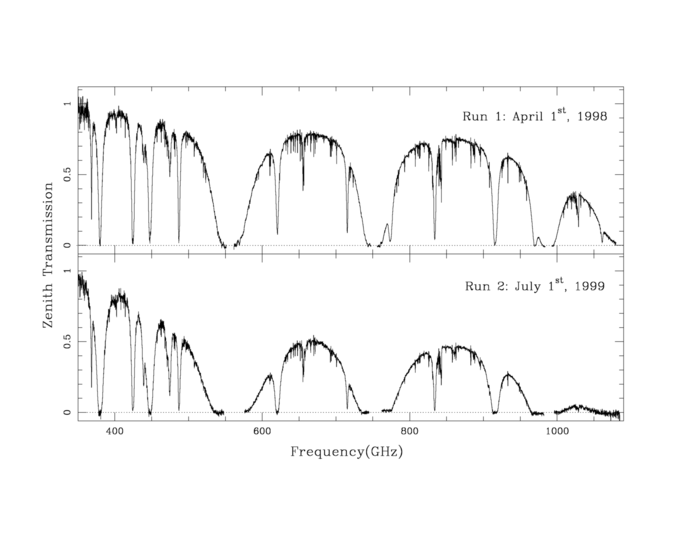
V.B.3.b. Line surveys
In addition to using a single molecule like CO to study the astrophysical dynamics of galactic properties such as star formation, astronomers are also keenly interested in the chemistry of the interstellar clouds themselves. The molecular cloud in Orion is particularly well suited for study both because of its size and proximity (~500 pc; 2000 LY). There have been many line surveys of this source over the years, but a good example is that of Schilke, Groesbeck, Blake, and Phillips.[1] For this study the CSO instrument atop Mauna Kea listed in Table V.B.1-1 was used to survey the 325 – 360 GHz region. About 2200 lines were observed; an overview is shown in Fig. V.C.3.b-1 and an expanded region around 338.5 GHz is shown in Fig. V.B.3.b-2. This latter figure shows that the richness and denseness of the spectrum is such that spectral confusion rather than instrument sensitivity is becoming the limiting factor in these strong sources. More recently, a survey in the 607 – 725 GHz region has also been completed. [2]

Figure V.B.3.b-1. Composite spectrum of the 325-360 survey of the Orion molecular cloud taken by the CSO instrument on Mauna Kea.
Figure V.B.3.b-1, especially below 330 GHz, shows another important feature of the THz region: atmospheric absorption. Although Mauna Kea is one of the best submillimeter observing sites in the world, as telescopes push to ever higher frequencies, atmospheric absorption becomes an increasing limitation. Figure V.B.3.b-3 shows zenith observations of atmospheric transmission at Mauna Kea taken with a Fourier Transform Spectrometer (FTS) with ~200 MHz resolution.[3] The notable feature of this comparison is that the data of 1998 were taken under unusually dry conditions (ground level relative humidity of ~2%) and that transmission windows as high as 1035 GHz provided as much as 35% transmission.

Figure V.B.3.b-2. Detail of the 338-339 portion of the 325-260 survey of the Orion molecular cloud taken by the CSO instrument on the Mauna Kea.

Figure V.B.b-3. Zenith atmospheric transmission from Mauna Kea.
Back to V.B. Astronomical Spectroscopy
[1] P. Schilke, T. Groesbeck, G. Blake, T.G. Phillips, Ap. J. Supp. Ser., 108 (1997) 301.
[3] J.R. Pardo, E. Serabyn, J. Cernicharo, J. Quant. Spectrosc. Radiat. Transfer, 68 (2001) 419-433.